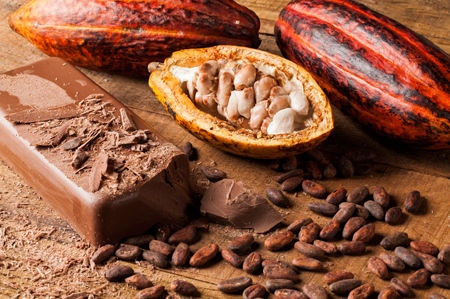Barry Callebaut Flags Rising Cocoa Processing Margins, as Chocolate Market Revives
Category: Cocoa
 (Agrimoney) – The world’s biggest chocolate maker, quoting research by Nielsen, said that the global chocolate confectionery market expanded by 3.1% in the September-to-November period – well ahead of the 0.1% growth achieved over the previous 12 months.
(Agrimoney) – The world’s biggest chocolate maker, quoting research by Nielsen, said that the global chocolate confectionery market expanded by 3.1% in the September-to-November period – well ahead of the 0.1% growth achieved over the previous 12 months.
The European market saw a particular improvement, with growth of 3.6% in the September-to-November quarter, compared with contraction of 0.5% in the previous year.
And Barry Callebaut, helped by acquisitions, achieved even faster growth, of 8.0% to 532,165 tonnes in global sales volumes in the latest quarter.
“We had a strong start to the new fiscal year, with significantly above market growth,” said Antoine de Saint-Affrique, chief executive at the Swiss-based group, adding that the “increase in volume is broad-based”, across its divisions.
‘Back in double-digit growth territory’
In Europe, the group achieved a 10.3% surge in volumes, to 284,184 tonnes, helped by extra business in Belgium from Mondelez – one of the major confectionery groups, alongside the likes of Hershey and Kraft, for which Barry Callebaut makes chocolate.
“Eastern Europe is firmly back in double-digit growth territory thanks to a more diversified customer base,” Barry Callebaut added.
In Asia Pacific, volumes soared 17.4% to 26,467 tonnes – well ahead of the 4.8% expansion in the regional market, according to Nielsen – backed by the “ramp up” of the group’s Garuda Foods outsourcing deal in Indonesia, and “positive developments” in the much-watched Chinese and Indian markets.
‘Exceptionally strong demand’
The group’s global cocoa division, meanwhile, which sells unfinished cocoa products, saw sales outside Barry Callebaut rise by 7.4% to 120,553 tonnes in the quarter.
“The company experienced exceptionally strong market demand for cocoa products,” the group said, flagging boosts from “a positive market environment and a reduction in suppliers”.
Indeed, the combined cocoa ratio – the aggregate value of cocoa butter and powder, the two main cocoa processing products, compared with the value of the raw beans – ended 2017 at about 3.7 in Europe, close to its highest on data going back a decade.
The ratio, which fell to some 2.8 in mid-2014, has been helped by weak prices besides strong demand, with Barry Callebaut noting that cocoa values for the September-to-November period were down 27% year on year.
‘Small surplus’
The group, expanding on the cause of the price weakness, said that “fundamentally, favourable weather conditions improved the outlook for the main cocoa producing country Côte d’Ivoire”.
The International Cocoa Organization pegs at 335,000 tonnes the world production surplus for 2016-17, on an October-to-September basis.
Barry Callebaut signalled that output looked like exceeding consumption this season too, despite an expectation that it expects the chocolate “market recovery to continue”.
The group said that “although cocoa bean demand picked up in most of the regions due to lower prices, the 2017-18 season is likely to show a small surplus overall”.
The forecast tallies with results of a late-December Bloomberg survey, which pegged the 2017-18 surplus at 67,300 tonnes.
Grind data
Barry Callebaut’s comments follow a mixed round of regional data on the cocoa grind for the October-to-December period.
Data for Europe, at 353,000 tonnes, well received, being the highest ever for a final quarter, and representing a 4.4% rise year on year, and improving to 2.6% the rate of growth for the full 2017.
However, data for North America, showing a 1.3% drop to 116,100 tonnes in the grind for the October-to-December period, fell short of market expectations.
The Asian grind, at 196,476 tonnes, was up 4.2% year on year, but represented something of a slowdown, given that full-2017 volumes reached 724,211 tonnes, a rise of 11.2% year on year.
Revenues fall
In financial terms, Barry Callebaut reported sales down 0.7% at SFr1.87bn for the latest quarter, reflecting weaker cocoa prices, reflected in lower prices of chocolate sold by the group.
The drop “is mainly due to the impact of lower cocoa prices and other lower raw material prices, which, based on the company’s cost-plus model, are for the majority of its business passed on to customers”.
Barry Callebaut shares stood 1.5% lower at SFr1930 in late morning deals.

